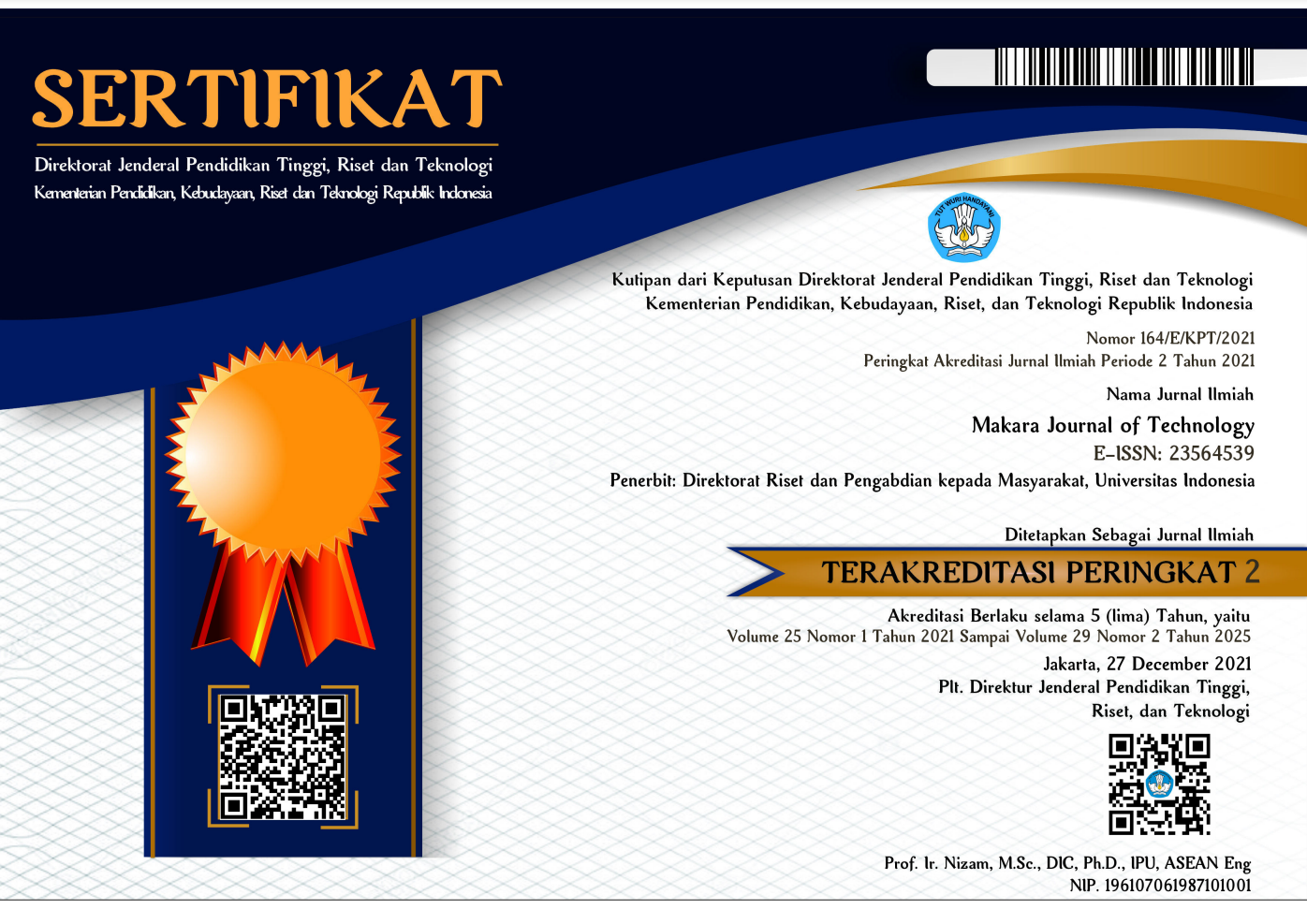Abstract
Cholesterol oxidase (CO) was successfully produced from Streptomyces sp. via the submerged fermentation method, and 69 U/mL enzyme activity was obtained. This study aimed to determine cholesterol oxidation kinetics and the production of CO as a catalyst. The enzyme was diluted to 0.15, 0.075, and 0.00375 U/mL for the oxidation reaction. The substrate was also prepared in three concentrations: 3.23, 6.46, and 12.93 mM. The optimization of conditions for enzymatic cholesterol oxidation was investigated through measurement of the effect of initial cholesterol and enzyme concentrations. Cholesterol concentration was rapidly measured via high-performance liquid chromatography (HPLC). The kinetics of CO were modeled using the first-order irreversible reaction. An enzymatic kinetic model was derived, and it was verified using experimental data and sensitivity analysis. Based on the experiment, the highest enzyme concentrations of crude and commercial CO can oxidize the substrate up to 84% within 240 min. However, the oxidation reaction showed a slightly different behavior in the early 60 min, and crude CO exhibited a slower substrate oxidation. The kinetic rate constant obtained by Euler’s method reached 1.0 x 10−3/min and 1.41 x 10−3/min for 0.15 U/mL crude and commercial CO, respectively.
References
- H.K. Walker, W.D. Hall, J.W. Hurst (Eds.), Clinical Methods: The History, Physical, and Laboratory Examinations, 3rd ed., Boston, Butterworths, 1990.
- W. Richmond, Clin. Chem. 19/12 (1973) 1350.
- C. Lv, W. Wang, Y. Tang, L. Wang, S. Yang, Process Biochem. 37/8 (2002) 901.
- A.D. Bholay, D.J. Gadekar, S.K. Sawant, S.M. Sonawane, Int. J. Curr. Microbiol. App. Sci. 2/3 (2013) 19.
- M.S. Perdani, M. Faturrohman, D.N. Putri, H. Hermansyah, AIP Conf. Proc. 2193 (2019) 030020.
- J. MacLachlan, A.T.L. Wotherspoon, R.O. Ansell, C.J.W. Brooks, J. Steroid Biochem. 72/5 (2000) 169.
- P.H. Lolekha, Y. Jantaveesirirat, J. Clin. Lab. Anal. 1 6/6 (1992) 405.
- E. Dako, A.-M. Bernier, A.T. Dadie, C.K. Jankowski, Chem. Biol. 17 (2012) 19.
- M.S. Perdani, M.D. Juliansyah, D.N. Putri, T.S. Utami, C. Hudaya, M. Yohda, et al., Int. J. Technol. 11/4 (2020) 754.
- M.L. Wong, J.R. Krycer, J.G. Burchfield, D.E. James, Z. Kuncic, FEBS Open Bio. 5 (2015) 226.
- H.M. Atta, J. Saudi Chem. Soc. 19/1 (2015) 12.
- M.S. Perdani, M. Sahlan, S. Farida, D.N. Putri, S.A. Soekanto, H. Hermansyah, AIP Conf. Proc. 2092 (2019) 030027.
- A. Hasani, A. Kariminik, K. Issazadeh, Int. J. Adv. Biol. Biomed. Res. 2/1 (2014) 63.
- A. Vrielink, Subcell. Biochem. 51 (2010) 137.
- N.E.-A. El-Naggar, H.M. Soliman, N.M. El Shweihy, Sci. Rep. 8 (2018) 2706.
- A.R.C. Braga, A.P. Manera, J.d.C. Ores, L. Sala, F. Maugeri, S.J. Kalil, Food Technol. Biotech. 51/1 (2013) 45.
- T.J.G. Salva, A.M. Liserre, A.L. Moretto, M.A.T. Zullo, G. Ventrucci, T.J.B. Menezes, 3 Rev. Microbiol. 30 (1999) 315.
- A. Rogers, Y. Gibon, In: J. Schwender (Ed.), Plant Metabolic Networks, Springer, New York, USA, 2009, p.71.
- Y. Yano, Y. Watanabe, K. Matsuzaki, B.B.A. Biomembranes. 1863/3 (2021) 183532.
- C. Wang, Y. Cao, B. Sun, B. Ji, M.J.R. Nout, J. Wang, et al., World J. Microb. Biot. 24 (2008) 2149.
- U. Patil, N. Mokashe, J. Shaha, S. Arthekar, H. Jagatap, Ultrason. Sonochem. 40/Part A (2018) 201.
- A.G. Margoni, Enzyme Kinetics: A Modern Approach, 1st ed., John Wiley & Sons, Hoboken, New York, USA, 2003.
Recommended Citation
Perdani, Meka Saima; Hermansyah, Heri; Sahlan, Muhamad; Putri, Dwini Normayulisa; Pambudi, Teguh; and Hasibuan, Anggi Khairina Hanum
(2024)
"Determination of the Kinetic Parameters of Cholesterol Oxidation using Cholesterol Oxidase from Streptomyces sp.,"
Makara Journal of Technology: Vol. 28:
Iss.
3, Article 3.
DOI: 10.7454/mst.v28i3.1633
Available at:
https://scholarhub.ui.ac.id/mjt/vol28/iss3/3
Included in
Amino Acids, Peptides, and Proteins Commons, Biochemical and Biomolecular Engineering Commons, Biochemistry, Biophysics, and Structural Biology Commons, Biotechnology Commons, Catalysis and Reaction Engineering Commons, Enzymes and Coenzymes Commons



